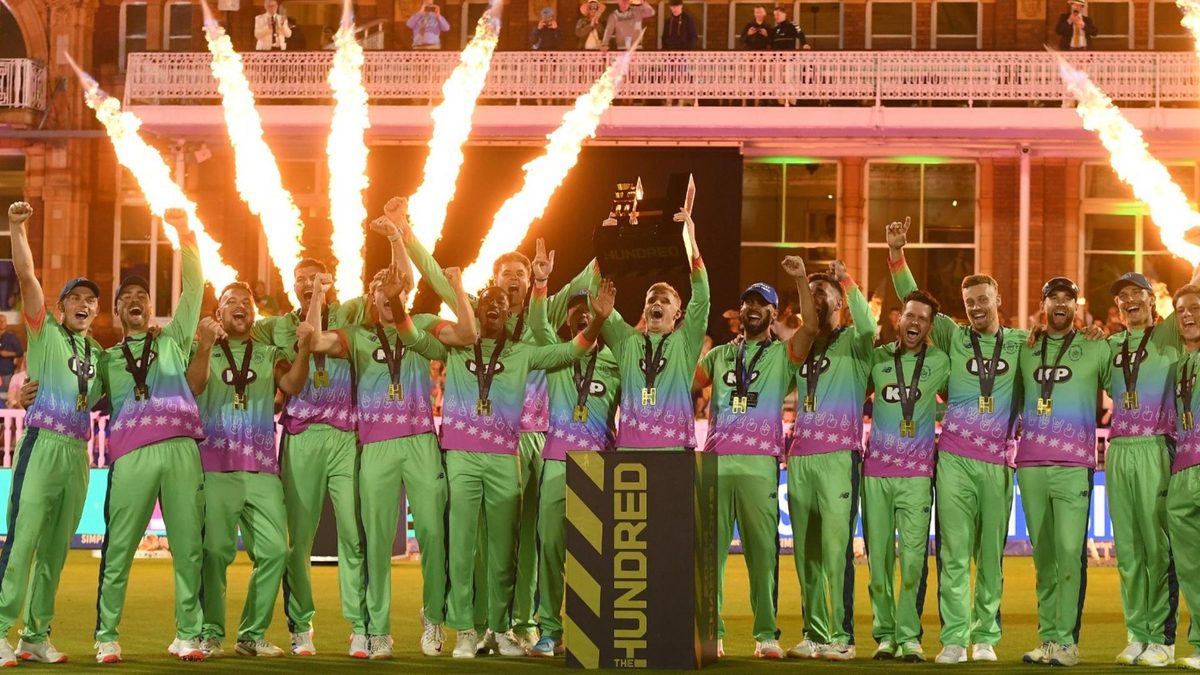
Phil Walker looks at reasons to be optimistic following the sale of The Hundred franchises. This article first appeared in issue 85 of Wisden Cricket Monthly.
The numbers are astronomical, unnervingly so, and stirring endorsements of the game’s essential value and grandeur.
If it passed you by, or it spins your head out, or leaves you feeling strangely untethered from the thing you love, then let’s talk about the scale of what has just taken place.
At a swoop, the injection of some £400m into the coffers, via percentage sales of the eight Hundred franchises, shifts the plates forever. An assortment of lavishly bejewelled hyper-investors from India and America have found some cash down the back of their portfolios and, for reasons not unrelated to vanity, decided to scatter it on a game in no position to refuse it. It amounts to the single most significant month in English cricket since that time back in 2003 when some smart marketing gadgy suggested that 20-overs a side might be a laugh.
The journalist in me wants to prevaricate, to foreshadow some desiccated future of a game reduced to diamonds and rust, all money, no value. But the fan keeps winning out.
I think we forget, all too easily, how much cricket has going for it. A rich and deep heritage. Stately venues. Versatile formats. A sprawling network of professional clubs acting for the greater good, and below that, an implausibly resilient – though pitifully under-resourced – grassroots game.
And it’s here, again, where I land. The ECB has agreed a distribution model that will see 100 per cent of sale proceeds shared between the recreational and professional game. The first 10 per cent of any portion of the ECB’s share, or a host county’s share, will go straight to the recreational game. Approximately £50m is set to be distributed straight into the grassroots.
The game is facing so many hardships. I’ve lately been doing some research into cricket in schools. Assembled against the various crises of accessibility at youth level is an army of people – association secretaries, county club officers, teachers, coaches, educationalists, philanthropists – desperate to get even busier. The will is absolutely there, as are the ideas. My biggest hope, and concern, is that this money be spent wisely.
As far as I can see it, cricket in England had been so mismanaged for so long that the ECB has bet the house on repairing some of the damage wrought by their own hand on their own game. (You hear stories of older regimes that would chill your blood. One former senior employee told me last month that, in his view, one of the ECB’s formative iterations actually cherished cricket’s inequities and were happy to see them entrenched.)
There will be those who decry the perceived mission creep. Who rightly lament the inevitable loss of international cricket in August – though on this, the ECB continue to insist that nothing is set – and who fear that the game as they know it has vanished, that the special intimacy of its fragile inner world, stationed just beyond the clutches of the real thing, has effectively been obliterated.
Perhaps these fears are well grounded and that one day, a decade or two from now, when the money dries up, there will be nowhere left to run. Perhaps this will be England gone, and all that remains for us will be concrete and tyre magnates. But I keep coming back to a conversation I had with Ashley Giles a while back.
Giles runs Worcestershire from an office that wouldn’t pass for a storage cupboard for the club up the road. The dressing rooms are so small that it’s incumbent on a practical level that they get good people sharing it. It’s a club, he says, of second chancers and homegrown starlets, with a beautiful history and strong links with its community. It also has hefty debts, and a gorgeous ground that flooded eight times last year – enough for Giles to question whether New Road is sustainable as their long-term home.
Looking at how the gap between ‘Tier One’ clubs and the likes of Worcestershire has “irretrievably” widened brings clarity to Giles’ position. Try telling him that a £20-25m windfall is not a vital future-shaping injection.
“If you look at the 18 first-class counties, there’s absolutely a purpose to us,” he told me. “We all have a role to play in developing players, and to bringing cricket to these 18 satellites.” But with debt swimming around the game, it’s a tough spot for many clubs.
“Even some of the big clubs. A lot of debt for infrastructure and capital projects. For us the debt is much smaller but the ability to service that debt is also much smaller. But who knows? With private investment there may be opportunities for others to step up and take a seat at that big table. But it’s only going to happen with outside investment. New money will be a great help to everyone. What I can reassure people of, is that front and centre is the long-term sustainability of this club.”
For his club, read 17 others. Whether all this, for our counties, amounts to a new start, a little breathing space or a mere stay of execution, I can’t help but be hopeful. This money offers us a greater chance of 18 professional counties still being fully operational a decade from now. As Leonard Cohen said once, I’ve tried everything, but cheerfulness keeps breaking through.
Order your print of digital copy of issue 85 of Wisden Cricket Monthly, here








